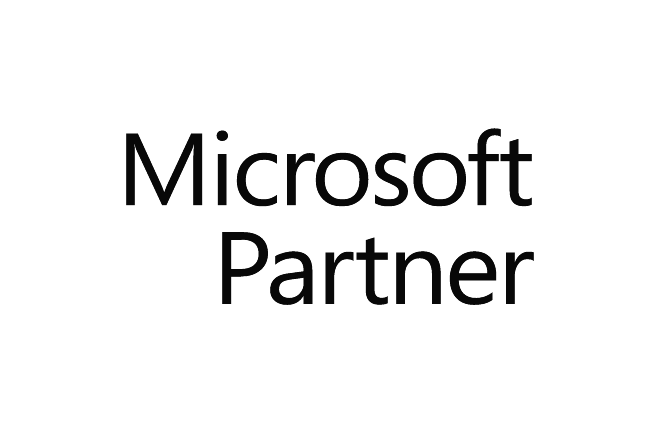From the time we start school and all through our education and work life, we are subjected to organized tasks, goals, and deadlines – in the form of projects. The definition of a project is a “collection of goals, tasks, and deadlines that have a clearly defined start and end”, as opposed to an ongoing operational task that gets repeated over and over again.
20-30 years ago, the project form was only used for major changes, like building cars, complex constructions or development of military materials. Nowadays, it seems like everything is a project and everyone is a project manager. Almost all workplaces have trended towards working in projects – to such an extent that businesses even organize their operations in a “project-like” structure. We even turn our personal sphere into projects! So, how do you:
1) Find out if the task at hand is best served by organizing and executing it as a project?
2) Create a simple, yet powerful, project management structure for your project?
In this article, we aim to answer both of those questions and to show how you can follow up and manage your project in Upwave. Let’s get to it!
Is it a project or… something else?
In general, projects are a good way to manage a set of tasks, but some managers and leaders try to define every task as part of a project. This is simply not the best way to go about it. A task or job function that is repeated every day is not a project – and this task or operation is best served and followed up by traditional structures like best practice instructions, quality controls, KPIs, etc. The project comes in when a deviation or quality issue has been detected in a process and one set about fixing or improving it.
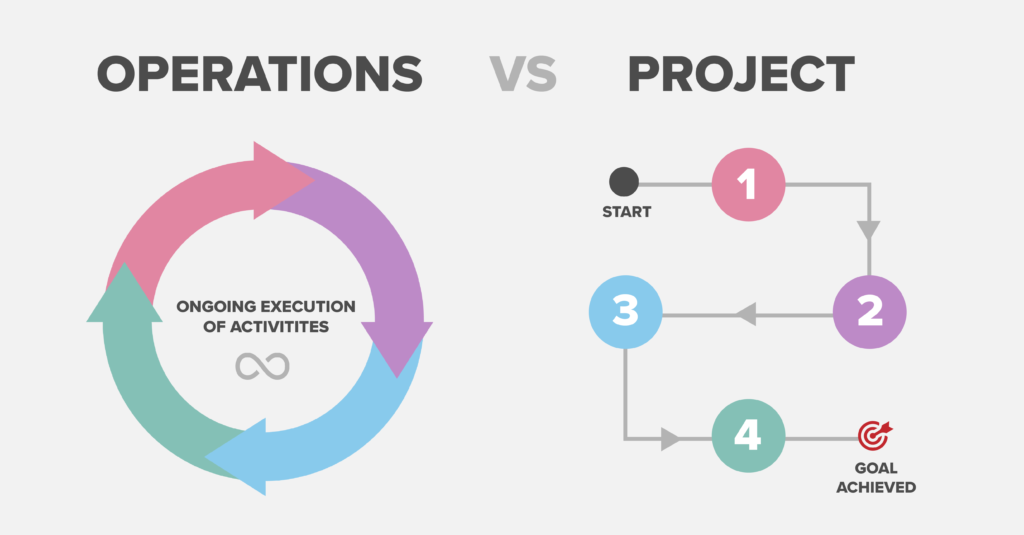
Let’s look at an example: A producer of soft drinks churns out thousands of liters of finished product every day. They have a KPI that says that their production process should not have more than a 1 % loss due to bad quality. At the production review meeting that happens every Monday, the loss for last week is at 5,2 % and is far above the expected result. The plant manager assigns 3 of her best engineers to trace the process, find the deviation and fix the problem by the next week’s production meeting. The production process lead engineer is set as responsible for the group.
The production process in itself is NOT a project, but solving the deviation and fixing it most certainly is. It has a clear goal (fix the process), allocated resources (engineers), and a clear deadline (next Monday before the meeting). This is a project.
So.. how do you create a project?
1. Define the scope, goal and mandate of the project
The process of creating a project starts with getting the project goal clearly defined. It is often not the person responsible for the project that defines the goal, but the person (or group) that wants the particular result of the project. This person/group is often called the Project Owner / Steering Committee.
Before you start planning the details of what needs to be done to achieve the desired results, you need to know exactly what the goal is. In the case outlined above, “Fix the process” is not a good enough goal. Why? Because how would you measure if the process is “fixed”? It’s difficult to do if there is nothing pinning down what a “fixed process” looks like…
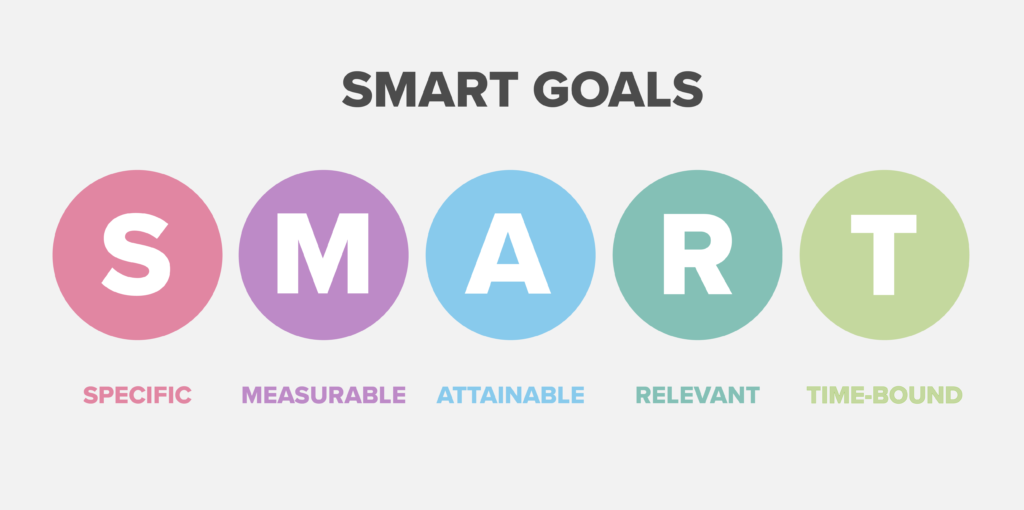
Setting a goal like “Fix the process so that the loss is below 1 %” is a much better goal. Why? Because you can measure it. It is clear, concise, and can be measured objectively. An even better goal could be “Fix the process so that the loss is below 1%, while also keeping the use of materials at the same level as historically”. This goal also defines a boundary, and you can add even more boundaries to clearly define both the goal itself, but also under which conditions this applies, and what resources can be utilized in order to reach the goal.
Usually, when the goal and all its boundaries have been clearly defined, all that has been agreed upon is put into a document usually known as the Project Mandate. This is the “order sheet” from the project owner to the project manager – this is what you should deliver me, within this timeframe, by using these resources.
2. Plan it out - start with the end and work towards tomorrow
- What you need to achieve
- By when you need to achieve said goal
- Which tools/resources you have at your disposal
If you start with the goal in mind and ask the question “What will need to happen in order for this to be true” enough times, you will get your starting point… The key to not get bogged down in details early on is to ask that same question at the highest level first. What are the 5-10 milestones/deliverables we need to reach in order for us to answer to the goals in the project mandate? In most projects, these high-level sub-goals are the milestones of the project, and if successfully reached will bring you to the goal at a certain time.
For each of those milestones, you will repeat that question and define each milestone as a separate “sub-project” with a defined input to reach the defined output, which will ensure that the overarching project is successful.
As for the example above, a possible project plan could be:
- Plan and establish project and secure mandate
- Pull and analyse all available process data
- Compare last weeks data with baseline data
- Interview 3-5 engineers and process workers for input
- Summarize findings and develop solution
- Finalize presentation of findings and conclusions
This is, of course, a significant simplification of a potentially complex project, and it is difficult to work at a detailed level developing this further, but please stay tuned for more in-depth articles on these processes. Creating a detailed project timeline is an important element of the planning process, and can easily be done in Upwave.
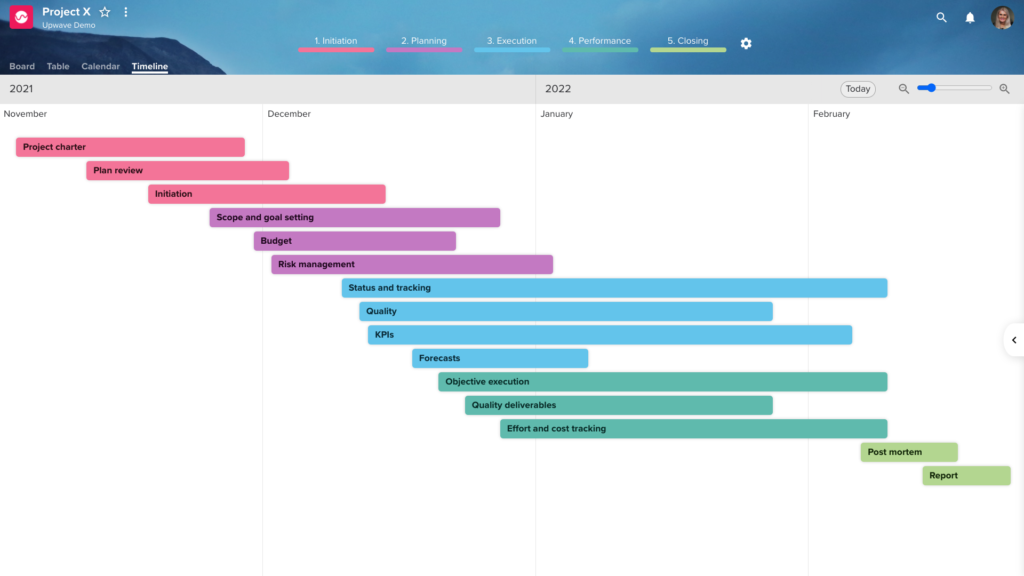
An important note on the project planning/milestone process is that as this is still before you have started working on the project, you can still hit significant unknown issues that can derail your whole project. This is the reason why several organizations have implemented what is called “Sprints”. This is a way of “carving up the mammoth” and to be able to correct course early on if you discover things that influence the process. This way of running the planning/execution part of the project is very much used with all processes related to IT Development.
3. Execute the project and deliver great results
Now to the hard part – not in planning, but execution… The planning of a project is mainly to make sure you have all your bases covered, and that there is a common understanding of the direction to take and what to deliver. To ease the burden of uncertainty that is always present in projects (am I working on the right thing here, or just wasting my time..), it’s important to maintain efficient communication between the project stakeholders.
It is a good tip to schedule meetings with the project owner (and other stakeholders) to report on progress, make corrections on the way forward, and continuously make sure that you are working towards a common goal. To facilitate this, book a series of meetings with the project owner/steering committee to give status, report early findings, and to correct course if needed. Schedule this early and make sure to have clear goals for each meeting, communicated beforehand.
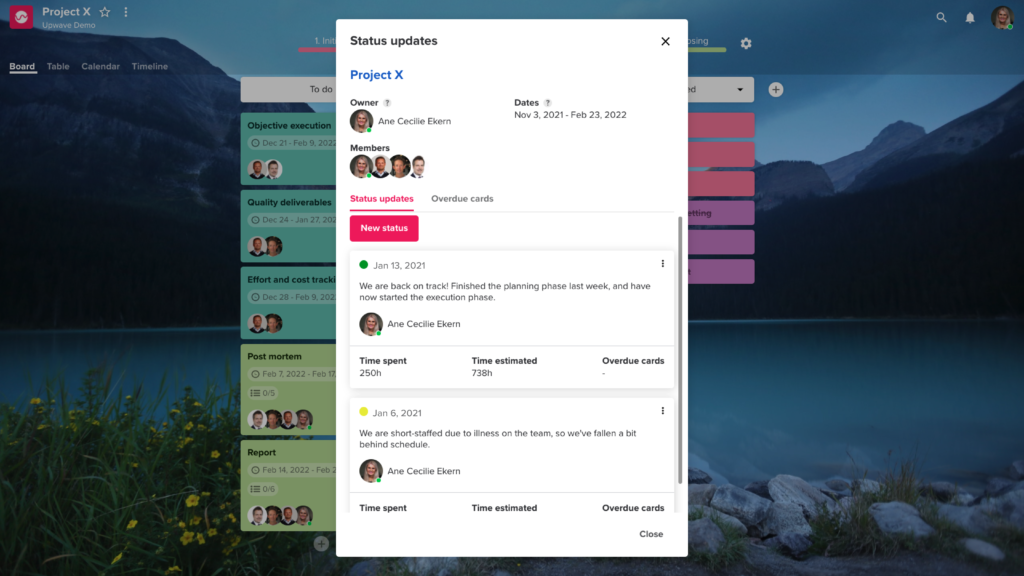
4. Reporting the project findings, and wrap up the project
All good things come to an end – as do great projects. When the final report has been made and all involved are happy with the work done and the results delivered, it is time to do a retrospective – or a WWW/EBI-session. WWW stands for What Went Well and the EBI is Even Better IF. This is a meeting to discuss just that – what was good and what can we do better the next time. It also serves as a debrief for the members of the team (including the project owner), to ensure that both the people involved and the organization itself learns from the project, so they can do things even better in the future.
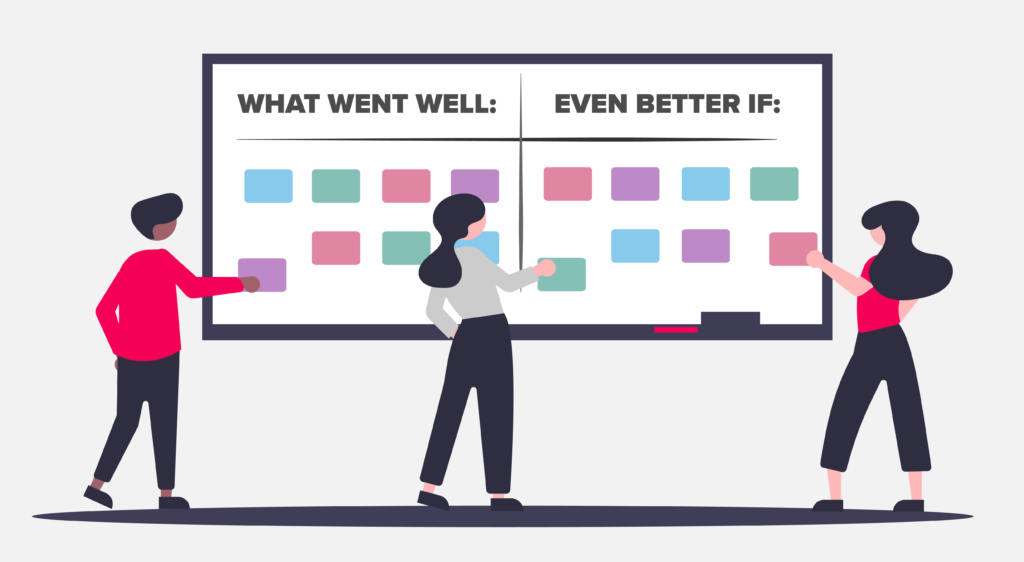
Best done in an informal setting, the WWW-meeting should be a session where all that have been involved can speak their mind and give feedback on all involved, and that is later summarized into a document that can be shared inside your organization. Sadly most companies or organizations skip this part, eager to get back to their duties in the “normal organizational structure”, but please invest those 30-90 minutes to really learn from the experience and get even better in the future.
Tools and distractions
As with most things these days, projects can be done even better, and certainly easier, when using the right tools. One such tool is Upwave, a visual platform for collaborating on your tasks and projects. Upwave lets you organize, plan, track, report and get things done – all in one place. The visual and intuitive interface makes collaborating with your team fun and effortless, while giving you the overview you need to stay on top of your responsibilities.
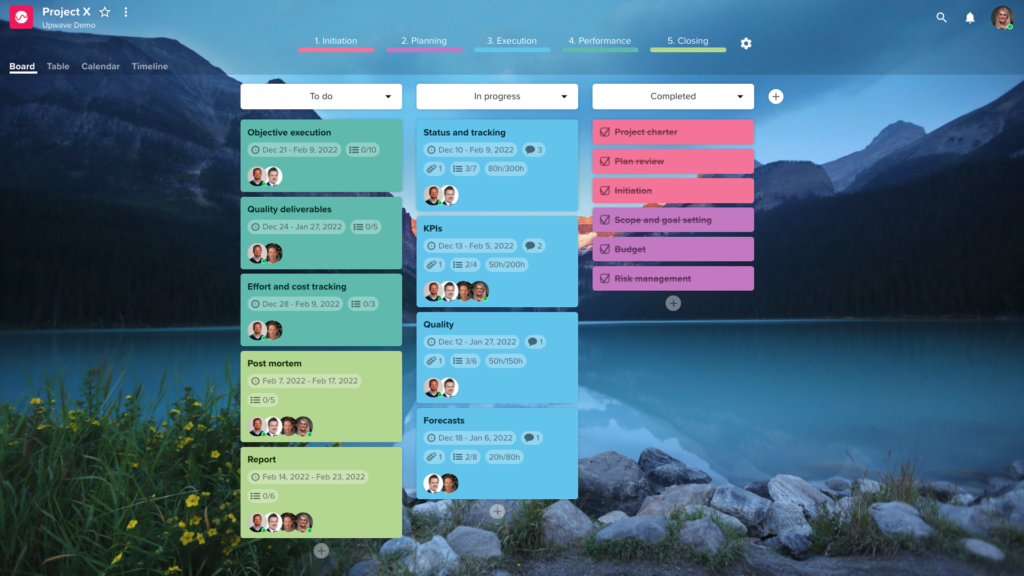
You can check out and try Upwave here. Do not hesitate to contact us with questions, comments, and feedback!
As for the example above, a possible project plan could be:
- Plan and establish project and secure mandate
- Pull and analyse all available process data
- Compare last weeks data with baseline data
- Interview 3-5 engineers and process workers for input
- Summarize findings and develop solution
- Finalize presentation of findings and conclusions
This is, of course, a significant simplification of a potentially complex project, and it is difficult to work at a detailed level developing this further, but please stay tuned for more in-depth articles on these processes. Creating a detailed project timeline is an important element of the planning process, and can easily be done in Upwave.
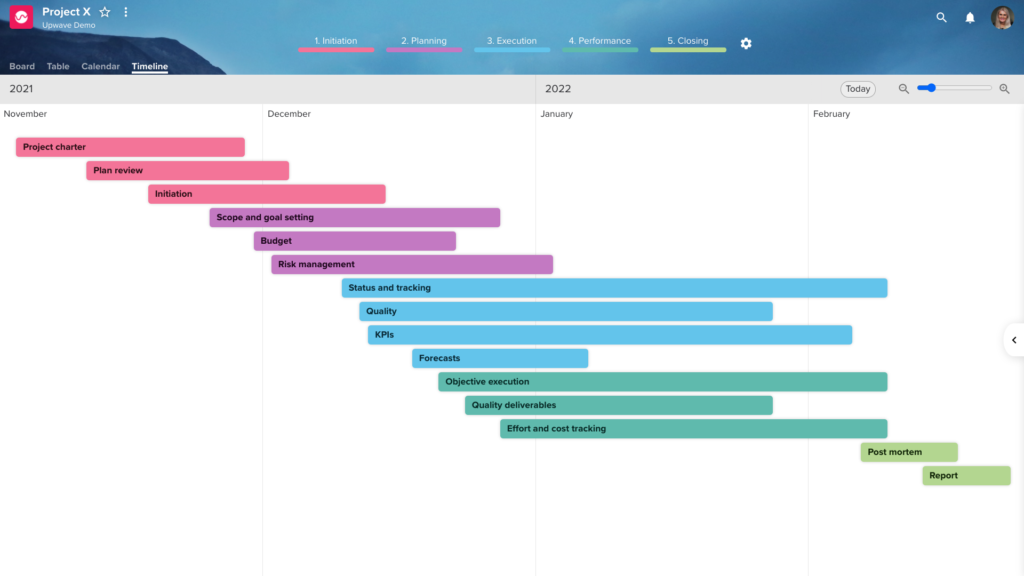
An important note on the project planning/milestone process is that as this is still before you have started working on the project, you can still hit significant unknown issues that can derail your whole project. This is the reason why several organizations have implemented what is called “Sprints”. This is a way of “carving up the mammoth” and to be able to correct course early on if you discover things that influence the process. This way of running the planning/execution part of the project is very much used with all processes related to IT Development.
3. Execute the project and deliver great results
Now to the hard part – not in planning, but execution… The planning of a project is mainly to make sure you have all your bases covered, and that there is a common understanding of the direction to take and what to deliver. To ease the burden of uncertainty that is always present in projects (am I working on the right thing here, or just wasting my time..), it’s important to maintain efficient communication between the project stakeholders.
It is a good tip to schedule meetings with the project owner (and other stakeholders) to report on progress, make corrections on the way forward, and continuously make sure that you are working towards a common goal. To facilitate this, book a series of meetings with the project owner/steering committee to give status, report early findings, and to correct course if needed. Schedule this early and make sure to have clear goals for each meeting, communicated beforehand.

4. Reporting the project findings, and wrap up the project
All good things come to an end – as do great projects. When the final report has been made and all involved are happy with the work done and the results delivered, it is time to do a retrospective – or a WWW/EBI-session. WWW stands for What Went Well and the EBI is Even Better IF. This is a meeting to discuss just that – what was good and what can we do better the next time. It also serves as a debrief for the members of the team (including the project owner), to ensure that both the people involved and the organization itself learns from the project, so they can do things even better in the future.

Tools and distractions
As with most things these days, projects can be done even better, and certainly easier, when using the right tools. One such tool is Upwave, a visual platform for collaborating on your tasks and projects. Upwave lets you organize, plan, track, report and get things done – all in one place. The visual and intuitive interface makes collaborating with your team fun and effortless, while giving you the overview you need to stay on top of your responsibilities.






